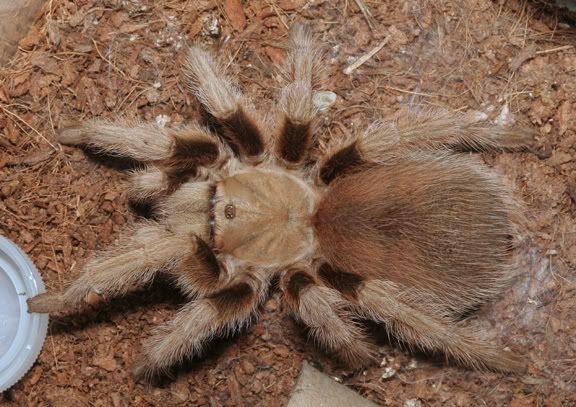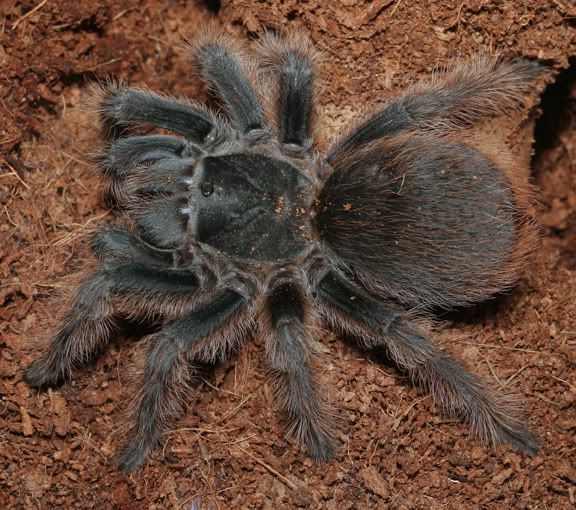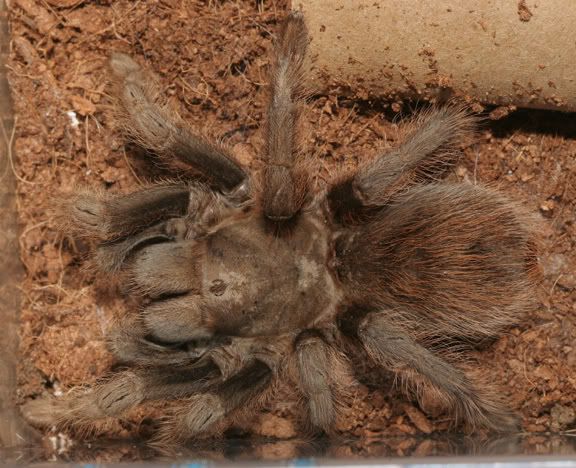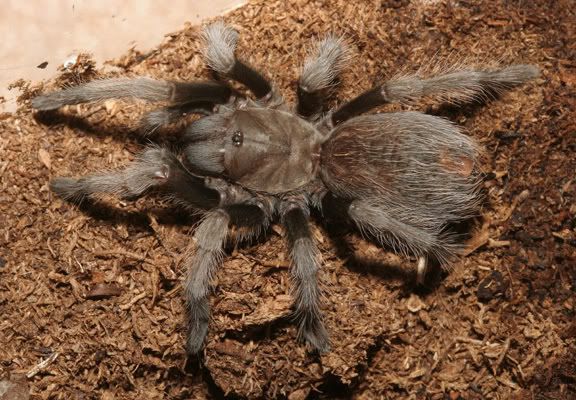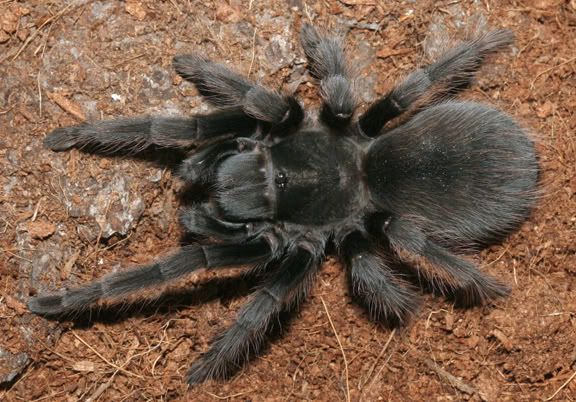- Joined
- Aug 15, 2005
- Messages
- 101
Here're some pics of my Aphonopelmas. Any input on what exactly they are would be appreciated 
Most of mine come from the California central coast. A lot of them were shades of beige when they were collected, but molted out into shades of gray and black. For some reason, the captives never get that beige color that the wild T's do when in need of a molt and retain their dark colors until the next molt.
Here are my A. eutylenum group T's
San Luis Obispo County, CA female at capture:
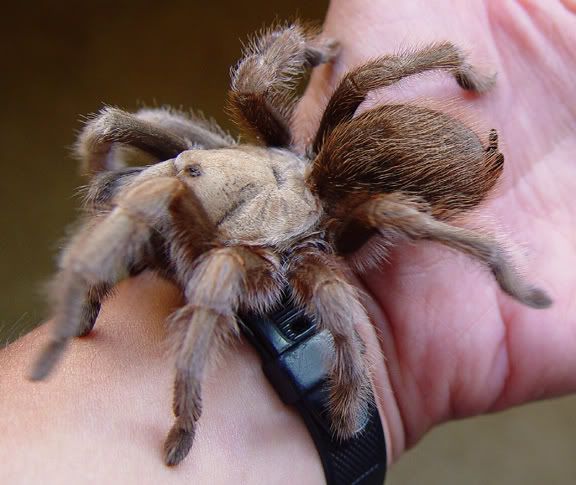
San Luis Obispo County, CA female after molt (this is a different female)
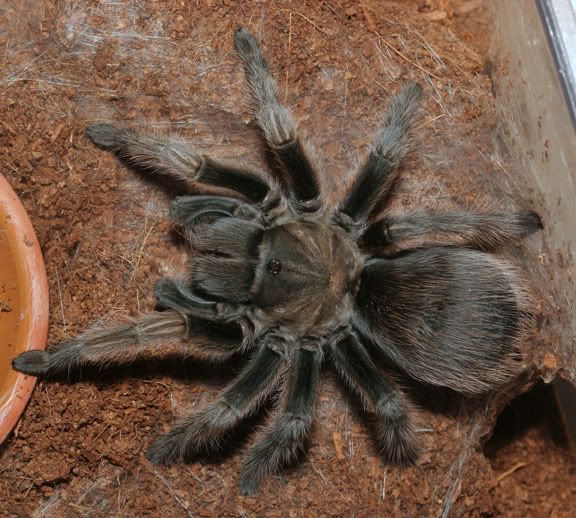
San Luis Obispo County, CA juvie male at capture:
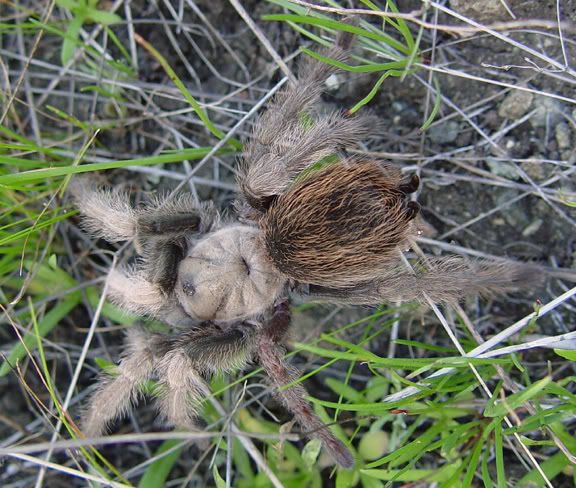
San Luis Obispo County, CA mature male (still hardening up):
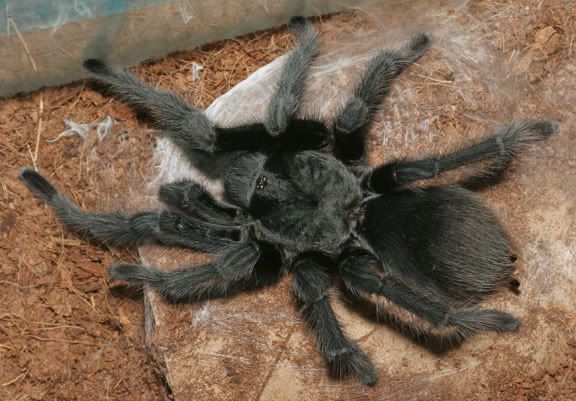
Santa Barbara County, CA female:
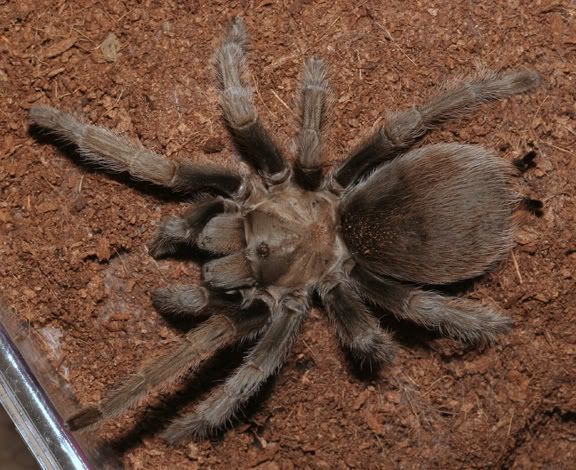
Coastal Santa Barbara County, CA female:
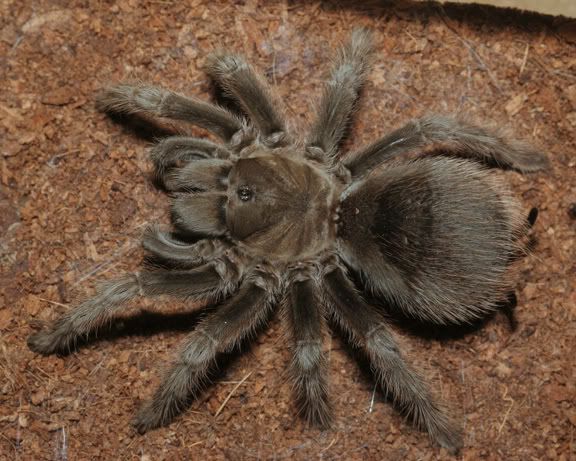
Inland San Luis Obispo County, CA female (she hasn't molted in my care yet):
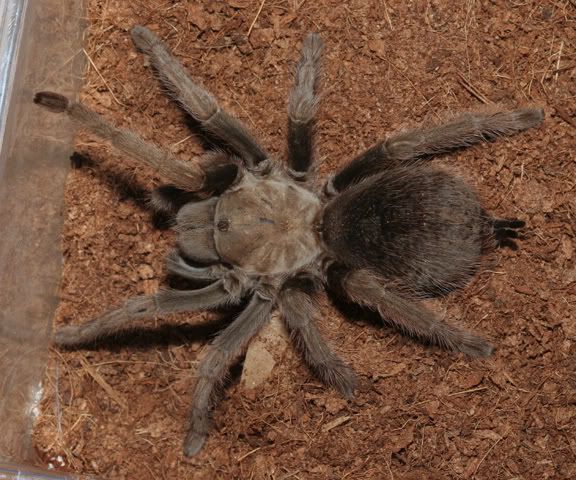
Mojave, CA female, my first T (rescued from a tarantula hawk):
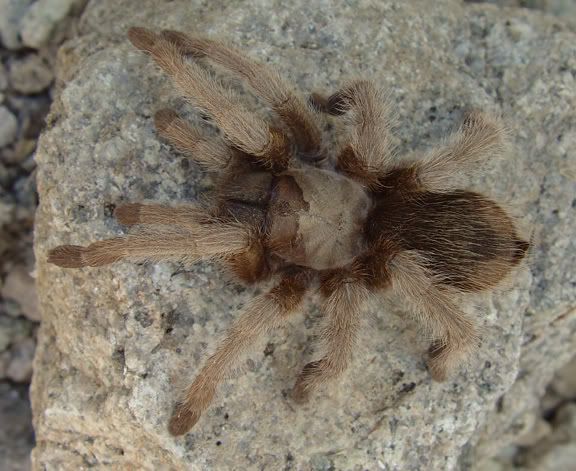
Mojave, CA female, after molt:
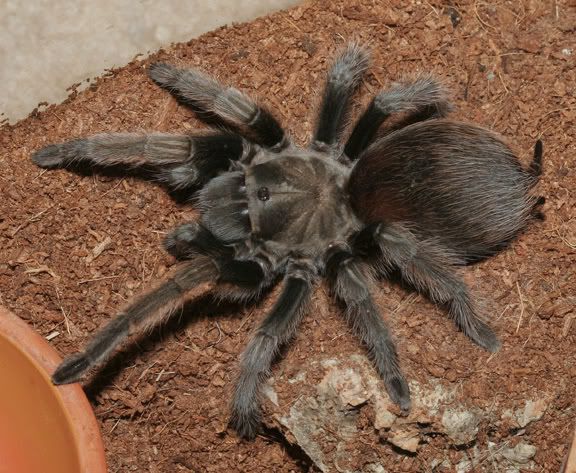
The Mojave girl may be A. iodus, but from what I've been able to gather it is not clear that A. iodus and A. eutylenum are differnt species and if they do end up being lumped they will all be A. eutylenum. The Mojave and the San Luis Obispo T's are the only ones that went through molts this year.
Most of mine come from the California central coast. A lot of them were shades of beige when they were collected, but molted out into shades of gray and black. For some reason, the captives never get that beige color that the wild T's do when in need of a molt and retain their dark colors until the next molt.
Here are my A. eutylenum group T's
San Luis Obispo County, CA female at capture:

San Luis Obispo County, CA female after molt (this is a different female)

San Luis Obispo County, CA juvie male at capture:

San Luis Obispo County, CA mature male (still hardening up):

Santa Barbara County, CA female:

Coastal Santa Barbara County, CA female:

Inland San Luis Obispo County, CA female (she hasn't molted in my care yet):

Mojave, CA female, my first T (rescued from a tarantula hawk):

Mojave, CA female, after molt:

The Mojave girl may be A. iodus, but from what I've been able to gather it is not clear that A. iodus and A. eutylenum are differnt species and if they do end up being lumped they will all be A. eutylenum. The Mojave and the San Luis Obispo T's are the only ones that went through molts this year.

